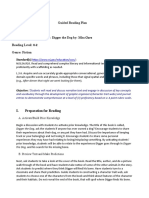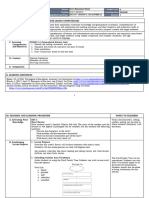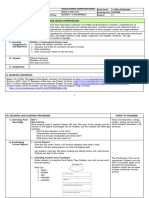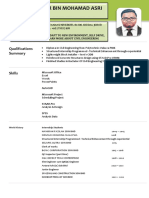0 ratings0% found this document useful (0 votes)
1 viewsRaz Laa70 Off Lblp
Raz Laa70 Off Lblp
Uploaded by
marchiue0905Copyright:
© All Rights Reserved
Available Formats
Download as PDF, TXT or read online from Scribd
Raz Laa70 Off Lblp
Raz Laa70 Off Lblp
Uploaded by
marchiue09050 ratings0% found this document useful (0 votes)
1 views3 pagesCopyright
© © All Rights Reserved
Available Formats
PDF, TXT or read online from Scribd
Share this document
Did you find this document useful?
Is this content inappropriate?
Copyright:
© All Rights Reserved
Available Formats
Download as PDF, TXT or read online from Scribd
Download as pdf or txt
0 ratings0% found this document useful (0 votes)
1 views3 pagesRaz Laa70 Off Lblp
Raz Laa70 Off Lblp
Uploaded by
marchiue0905Copyright:
© All Rights Reserved
Available Formats
Download as PDF, TXT or read online from Scribd
Download as pdf or txt
You are on page 1of 3
Off aa
Focus Question:
What is the cat doing in the book?
Book Summary
Text Type: Fiction/Concept
Cats can be very energetic and jump off objects all around the house! In the story Off,
students will read a repetitive text about a mischievous cat. Students will also focus on
retelling to understand the text as well as identifying the high-frequency word off.
Guiding the Reading
Lesson Essentials
Before Reading
Instructional Focus
Retell to understand text
Build Background
• Ask students if they have a pet at home. Have
Classify information
students discuss with a partner what types of pets
Describe information provided they have or would like to have. Encourage students
by illustrations to share their answers and write them on the board.
Identify words that rhyme Invite students to discuss what they know about cats,
Identify word family -at including what cats like to do and where they live.
Recognize and use nouns Introduce the Book
• Give students their copy of Off. Guide them to the
Identify and use the high-frequency
front and back covers and read the title. Have
word off
students discuss what they see on the covers.
Encourage them to offer ideas as to what type
Materials
of book it is (genre, text type, and so on) and
Book: Off (copy for each student) what it might be about.
Classify information, word family -at, • Show students the title page. Discuss the
nouns worksheets information on the page (title of book, author’s
Retelling rubric name, illustrator’s name)
Vocabulary Introduce the Reading Strategy: Retell
Boldface vocabulary words also appear • Explain to students that one way to understand and
remember a story is to stop periodically and retell
in a pre-made lesson for this title on
the details of the story in their mind. Explain to
VocabularyA–Z.com. (*) word appears
students that when they retell a story or event, they
in the lesson but not the book retell the details in the order that they happened.
• High-frequency words: off, the • Have students recall a classroom routine with which
• Words to Know they are very familiar. Have them retell the routine
with a partner. Invite volunteers to share their
Story critical: chair (n.), computer (n.),
retelling with the class. Write the details on the
couch (n.), off (prep.), step (n.), towel (n.) board, making sure the events are in the correct
• Academic vocabulary: classify (v.)* order. Point out to students that by retelling their
classroom routine, they can now remember it easier.
Introduce the Comprehension Skill:
Classify information
• Explain to students that readers often take the
details or objects in the story and decide what
they have in common. By thinking about what
the details or objects have in common and sorting
them into groups, a reader can remember and
understand what the story is about. Point out to
students that when they sort objects into groups,
they are classifying information.
© Learning A–Z All rights reserved. 1 www.readinga-z.com
Off aa
Guiding the Reading (cont.) Skill Review
• Review retelling by having students start on page 3
• Write the following words from the story on the and retell the events throughout the story. Write or
board: bed, couch, table, chair. Have students draw the events on the board while students retell.
discuss with a partner what all of these objects have Remind students that it is important to retell the
in common. Invite volunteers to share their answers events correctly in the order in which they happened.
with the class. • Model classifying information. Write the following
Vocabulary words on cards and place the cards on the board: cat,
the, chair, couch, car, table, towel. Move the words
Have students turn to the “Words to Know” box on
around according to how students classify them.
the copyright page. Point out that these words can be
Think-aloud: Earlier, we classified objects in the story
found in the story and that understanding the meaning
by what they have in common. We agreed that all of
of each word will help them better understand what
the objects belong in a house and the objects are all
they read. Read the words aloud to students and as a
furniture items. Now we are going to classify words
group, discuss the meaning of each word. On the basis
that are found throughout the story. As I think
of the definitions discussed, have students work in
about how to group these words, I start by asking
groups to illustrate each vocabulary word on a poster.
myself what they have in common. I see that there
Have students share their posters with the class.
are multiple words that start with the letter Cc, and
Set the Purpose I can group them together. How would I classify the
• Have students read to find out more about the words table, the, and towel? Are there other ways
energetic cat and what it’s doing. Write the Focus we can classify the words other than by the first
Question on the board. Invite students to look for letter? Classifying information from a story helps
evidence in the book to support their answer to me better remember and understand the text.
the question. • Guide students to find other ways to classify the
• Have students make a small question mark in their words into different groups, such as counting the
book beside any word they do not understand or number of letters in the words or by the types
cannot pronounce. These can be addressed in of words.
a future discussion. • Model and discuss how to complete the classify
information worksheet, using evidence from the
During Reading text. Have students discuss the details they noted
with a partner.
Text-Dependent Questions
As students read the book, monitor their understanding After Reading
with the following questions. Encourage students to
support their answers by citing evidence from the book. Ask students what words, if any, they marked in
their book. Use this opportunity to model how they
• What is the cat doing on each page? (level 2) can read these words using decoding strategies and
multiple pages context clues.
• How does the cat feel when it jumps off the towel?
(level 2) page 8 Skill Review
• Where does the cat live? (level 2) multiple pages Graphic Organizer: Classify information
• Why do you think the cat is jumping off the car? Review the classify information worksheet that students
(level 3) page 10 completed with a partner. Have students share their
work with the group. List ideas on the board.
Text Features: Illustrations
Explain to students that illustrations are pictures in a Response to Focus Question
story that are drawn or created by an artist, and point Have students cite specific evidence from the book to
out that the pictures in this story are all illustrations. answer the Focus Question. (Students should include:
Explain that illustrations can help assist readers by giving The cat jumps off the bed, couch, table, chair, computer,
them additional details and information about the story towel, step, and car.)
as well as help them decode the text. Have students look
at page 7 and explain that by looking at the picture, Comprehension Check
they can see the cat is jumping off the computer. Then • Retelling rubric
have students find the word computer in the sentence.
Point out to students that looking at the illustration may
help them decode the word computer. Have students
work with a partner to review other illustrations in the
book and discuss how using those illustrations can help
them decode unknown words.
© Learning A–Z All rights reserved. 2 www.readinga-z.com
Off aa
Book Extension Activities Grammar and Mechanics: Nouns
• Turn to page 3 of the story. Have students point to
Build Skills the cat in the picture. Explain to students that cat is
Phonological Awareness: Rhyme a noun. Explain that a noun is a word that names a
• Say the word bear aloud to students and have them person, place, or thing. Have students turn to page
repeat the word. Read the sentence on page 6 aloud 4 and point to the word couch. Explain that couch is
to students. Have them identify the word that sounds also a noun. Have students work with a partner to
like bear. Point out that bear and chair have the same decide whether a couch is a person, place, or thing.
sound at the end of the word, so the words rhyme. • Check for understanding: Have students work with
• Say the following words to students and have them a partner to underline the noun on each page of
repeat the words: care, dare, fair, hair. Periodically their book. When they have underlined the nouns,
stop and remind students that these are called have students take turns reading the nouns aloud
rhyming words. and sharing whether each noun names a person,
place, or thing.
• Check for understanding: Say the following words one
at a time and have students raise their hand when • Independent practice: Introduce, explain, and have
they hear a word that rhymes with chair: lair, couch, students complete the nouns worksheet. If time
pear, rare, stare, step, tear, wear, car, flair, cat. allows, discuss their answers.
Phonics: Word family -at Word Work: High-frequency word off
• Write the words cat, bat, fat on the board and read • Point out to students that the word off appears on
them aloud with students. Run your finger under every page of the story. Write the word off on the
the letters of each word while saying the sounds board and spell it aloud. Then say off again aloud
aloud. Explain to students that the words all belong and have students clap and say each letter.
in the word family -at. Have students discuss why • Have students turn to page 3 and point to the word
they think the words are in the word family -at with off in the book. Once all students have found the
a partner. Invite volunteers to share their answers word, guide them to spell it aloud. Continue to
with the class. have students turn to each page in the story and
• Write the ending -at on the board several more circle the word off while saying it aloud.
times and read the ending together. Explain to • Check for understanding: Have students practice
students that, when creating a word family, the first writing the word off on a separate sheet of paper.
letter changes while the end stays the same. Invite
a volunteer to write the letter Hh at the beginning
Connections
of -at on the board. Run your finger under the • See the back of the book for cross-curricular
sounds in the word and read the word aloud with extension ideas.
the class (hat). Continue inviting volunteers to write
consonants at the beginning of -at written on the
board. When finished, read each word as a class.
Remind students that the words are all in the -at word
family. Point out that the words in a word family all
rhyme because they end with the same sound.
• Check for understanding: Have students write the
letters Mm, Ss, Bb, Ff, Rr, and Pp on a separate sheet
of paper. Hand them each a card with -at written
on it. Have students work with a partner to practice
reading words they created by placing the -at card at
the end of each consonant written on their paper.
• Independent practice: Introduce, explain, and have
students complete the word family -at worksheet.
If time allows, discuss their answers.
© Learning A–Z All rights reserved. 3 www.readinga-z.com
You might also like
- Touareg Stereo Wiring DiagramDocument3 pagesTouareg Stereo Wiring Diagramsandved.maleren0% (1)
- Swift PaymentsDocument23 pagesSwift PaymentsDharanya VNo ratings yet
- Bridge To Terabithia LPDocument8 pagesBridge To Terabithia LPRicky FavelaNo ratings yet
- Raz La43 Fishsees LBLPDocument3 pagesRaz La43 Fishsees LBLPPOPENo ratings yet
- Raz Laa68 Thesebirds LblpDocument3 pagesRaz Laa68 Thesebirds Lblpmarchiue0905No ratings yet
- Raz La59 Idream LBLPDocument3 pagesRaz La59 Idream LBLPSarah ZhaoNo ratings yet
- Raz Laa68 Twelve LblpDocument3 pagesRaz Laa68 Twelve Lblpmarchiue0905No ratings yet
- Raz Laa87 Animalsnap LBLPDocument3 pagesRaz Laa87 Animalsnap LBLPhilary.chenNo ratings yet
- Raz lf57 Lookatfossils LBLPDocument3 pagesRaz lf57 Lookatfossils LBLPSarah ZhaoNo ratings yet
- Guiding The Reading Lesson EssentialsDocument3 pagesGuiding The Reading Lesson EssentialszeenatkerawalaNo ratings yet
- Raz lf54 Areyouokay LBLPDocument3 pagesRaz lf54 Areyouokay LBLPSarah ZhaoNo ratings yet
- Guiding The Reading Lesson Essentials: Brainstorm BearDocument3 pagesGuiding The Reading Lesson Essentials: Brainstorm BearMaRiPoSa992No ratings yet
- Raz Lf49 Ineedsnowday LBLPDocument3 pagesRaz Lf49 Ineedsnowday LBLPheorheNo ratings yet
- Raz ld56 Bestfriendsqandu LBLPDocument3 pagesRaz ld56 Bestfriendsqandu LBLPSaulus SaulusNo ratings yet
- Raz La68 Moveit LBLPDocument3 pagesRaz La68 Moveit LBLPSarah ZhaoNo ratings yet
- Raz Laa74 Black LBLPDocument3 pagesRaz Laa74 Black LBLPlibin linNo ratings yet
- Guiding The Reading Lesson EssentialsDocument3 pagesGuiding The Reading Lesson EssentialszeenatkerawalaNo ratings yet
- Guiding The Reading Lesson EssentialsDocument3 pagesGuiding The Reading Lesson EssentialsHasleen BeniNo ratings yet
- Raz La67 Makemelaugh LBLPDocument3 pagesRaz La67 Makemelaugh LBLPSarah ZhaoNo ratings yet
- Guiding The Reading Lesson EssentialsDocument3 pagesGuiding The Reading Lesson EssentialsNathaly NatalyNo ratings yet
- Lesson PlanDocument36 pagesLesson Plan宋馨No ratings yet
- Raz Laa86 Onairplane LblpDocument3 pagesRaz Laa86 Onairplane Lblpmarchiue0905No ratings yet
- Raz Laa73 Valentinesdaygifts LblpDocument3 pagesRaz Laa73 Valentinesdaygifts Lblpmarchiue0905No ratings yet
- Cinderella WorksheetDocument3 pagesCinderella WorksheetJhonathan JustinoNo ratings yet
- IndexDocument8 pagesIndexmunsaf.aliNo ratings yet
- Activity Information: Legends of Our TimeDocument10 pagesActivity Information: Legends of Our TimeCaren Jerica PonceNo ratings yet
- Raz lf52 Atmovies LBLPDocument3 pagesRaz lf52 Atmovies LBLPSarah ZhaoNo ratings yet
- Raz lc51 Manykindsofdinosaurs LBLPDocument3 pagesRaz lc51 Manykindsofdinosaurs LBLPlorieannparcocorpuz25No ratings yet
- Guided Reading Lesson PlanDocument5 pagesGuided Reading Lesson Planapi-295676255No ratings yet
- Tand L Sequence Fiction Yr 6 N 1 Fiction Genres The Princess' BlanketsDocument5 pagesTand L Sequence Fiction Yr 6 N 1 Fiction Genres The Princess' Blanketsjoy_simpson384No ratings yet
- Guided Reading New-2Document5 pagesGuided Reading New-2api-510548555No ratings yet
- Raz Lo24 Lastdayofschool LBLPDocument3 pagesRaz Lo24 Lastdayofschool LBLPEenee ChultemjamtsNo ratings yet
- Noise in the Night_00Document6 pagesNoise in the Night_00ssweigerNo ratings yet
- Comprehension Lesson PlanDocument9 pagesComprehension Lesson Planapi-376073961No ratings yet
- Readers Notebook Literacy Acitivties PlannerDocument4 pagesReaders Notebook Literacy Acitivties Plannerapi-363254905No ratings yet
- Kinder Guided Reading Week 4Document3 pagesKinder Guided Reading Week 4api-373629977No ratings yet
- Ordinary Days: Unit OverviewDocument10 pagesOrdinary Days: Unit OverviewNadi Htoo Htet NaingNo ratings yet
- DLL Matatag - English 4 Q1 W1Document9 pagesDLL Matatag - English 4 Q1 W1Nigel CayubitNo ratings yet
- Raz Lg41 Tasteblood LBLPDocument3 pagesRaz Lg41 Tasteblood LBLPdoris01814No ratings yet
- Lesson Plan 9 IDocument4 pagesLesson Plan 9 IMiruna Anamaria LupășteanNo ratings yet
- Raz lf53 Areyoufrombrazil LBLPDocument3 pagesRaz lf53 Areyoufrombrazil LBLPSarah ZhaoNo ratings yet
- Raz La47 Muscles LBLPDocument3 pagesRaz La47 Muscles LBLPSarah ZhaoNo ratings yet
- Ordinary Days PDFDocument10 pagesOrdinary Days PDFShruti DNo ratings yet
- 7 GRDocument24 pages7 GRbellazhankaNo ratings yet
- Guided Reading PlanDocument3 pagesGuided Reading Planapi-414140776No ratings yet
- Raz La68 Makesalad LBLPDocument3 pagesRaz La68 Makesalad LBLPSarah ZhaoNo ratings yet
- DLL Matatag - English 4 Q1 W1Document8 pagesDLL Matatag - English 4 Q1 W1Rutchelle DalimagNo ratings yet
- Raz Laa68 Thiskitchen LblpDocument3 pagesRaz Laa68 Thiskitchen Lblpmarchiue0905No ratings yet
- Sample Lesson Notes - Week 11: Basic FiveDocument13 pagesSample Lesson Notes - Week 11: Basic FiveStephen Rashid DaudaNo ratings yet
- DLL Matatag - English 4 Q1 W1Document8 pagesDLL Matatag - English 4 Q1 W1121349100% (1)
- Teaching Guide Catchup Friday G4 August 02Document13 pagesTeaching Guide Catchup Friday G4 August 02Lea MarmolNo ratings yet
- Raz Lk06 Extremeanimals LPDocument6 pagesRaz Lk06 Extremeanimals LPrayneponting01No ratings yet
- Q1 LE English 4 Lesson 1 Week 1Document11 pagesQ1 LE English 4 Lesson 1 Week 1Dolores EspinosaNo ratings yet
- DLL Matatag - English 4 q1 w1Document8 pagesDLL Matatag - English 4 q1 w1Nerie Billuan Mosende GervacioNo ratings yet
- Dll Matatag _english 4 q1 w1Document8 pagesDll Matatag _english 4 q1 w1adrian wydeNo ratings yet
- Raz Laa13 Under LpDocument5 pagesRaz Laa13 Under Lpmarchiue0905No ratings yet
- Its Mine Lesson PlanDocument2 pagesIts Mine Lesson Planapi-347973818100% (1)
- Save The Frogs UpdateDocument12 pagesSave The Frogs Updatececildous1317No ratings yet
- Raz Lz31 Zoothroughages LPDocument5 pagesRaz Lz31 Zoothroughages LPKaren GilmartinNo ratings yet
- DLL Matatag - English 4 Q1 W1Document8 pagesDLL Matatag - English 4 Q1 W1Jynemie DiazNo ratings yet
- Learning Objectives Materials and Preparations Key Terms Class Development 1 Activity 1 Assessment (5 Minutes) Whole GroupDocument8 pagesLearning Objectives Materials and Preparations Key Terms Class Development 1 Activity 1 Assessment (5 Minutes) Whole GroupDavid VargasNo ratings yet
- Milliken's Complete Book of Instant Activities - Grade K: Over 110 Reproducibles for Today's Differentiated ClassroomFrom EverandMilliken's Complete Book of Instant Activities - Grade K: Over 110 Reproducibles for Today's Differentiated ClassroomNo ratings yet
- Valentines Day GiftsDocument14 pagesValentines Day Giftsmarchiue0905No ratings yet
- Raz Laa47 Water Clr DsDocument8 pagesRaz Laa47 Water Clr Dsmarchiue0905No ratings yet
- Raz Laa86 Onairplane Clr DsDocument8 pagesRaz Laa86 Onairplane Clr Dsmarchiue0905No ratings yet
- UnderDocument19 pagesUndermarchiue0905No ratings yet
- One InsectDocument19 pagesOne Insectmarchiue0905No ratings yet
- Raz Laa70 Off Clr DsDocument8 pagesRaz Laa70 Off Clr Dsmarchiue0905No ratings yet
- 2024仁爱英语 七年级上册Document170 pages2024仁爱英语 七年级上册marchiue0905No ratings yet
- 5 10.1111@clr.13698Document31 pages5 10.1111@clr.13698josephineNo ratings yet
- Buluan, MaguindanaoDocument2 pagesBuluan, MaguindanaoSunStar Philippine NewsNo ratings yet
- SSVF 1Document4 pagesSSVF 1meghanayadav018No ratings yet
- Ultra Quiet, Ultra Low-Frequency Accelerometer: SpecificationsDocument1 pageUltra Quiet, Ultra Low-Frequency Accelerometer: SpecificationsAlvaro CotaquispeNo ratings yet
- TRUMP V ANDERSON No. 23-719 USSC Response To Amicus EOTDocument97 pagesTRUMP V ANDERSON No. 23-719 USSC Response To Amicus EOTNeil GillespieNo ratings yet
- Cat XT ES Hose: The New Standard in Hose PerformanceDocument2 pagesCat XT ES Hose: The New Standard in Hose PerformanceJuan ValdesNo ratings yet
- Case 10-1 Columbus Park-WasteDocument2 pagesCase 10-1 Columbus Park-Wastemymoonah100% (1)
- Pumps and Filters: 345D, 349D, and 349D Excavator Hydraulic SystemDocument2 pagesPumps and Filters: 345D, 349D, and 349D Excavator Hydraulic SystemTeknik Makina100% (1)
- C NotesDocument69 pagesC NotesSuman ReddyNo ratings yet
- Graco 333Document20 pagesGraco 333Andy CeslowNo ratings yet
- Theatre VocabularyDocument4 pagesTheatre VocabularyRubén LópezNo ratings yet
- Mohd Azmeer Bin Mohamad Asri: QualificationsDocument6 pagesMohd Azmeer Bin Mohamad Asri: QualificationsMaisarah AsriNo ratings yet
- TLV - Air & Drain TrapsDocument8 pagesTLV - Air & Drain TrapsLuis RojasNo ratings yet
- Cluster Schools: Educational Development Master Plan (Pipp) Thrust 6: Accelerating Excellence of Educational InstitutionsDocument42 pagesCluster Schools: Educational Development Master Plan (Pipp) Thrust 6: Accelerating Excellence of Educational InstitutionsNoor RaziNo ratings yet
- Stem ExperimentDocument4 pagesStem ExperimentDiego PgNo ratings yet
- CPR Homes For All Toolkit CompressedDocument224 pagesCPR Homes For All Toolkit Compressedapi-748938834No ratings yet
- Product Data Sheet: APC Smart-UPS RT 6000VA, 230V, 8x IEC 60320 C13 & 4x IEC Jumpers & 2x IEC 60320 C19 OutletsDocument4 pagesProduct Data Sheet: APC Smart-UPS RT 6000VA, 230V, 8x IEC 60320 C13 & 4x IEC Jumpers & 2x IEC 60320 C19 OutletsOsvaldo Leonardo LetowskiNo ratings yet
- 40 H Service Manual - T81602bDocument196 pages40 H Service Manual - T81602bfdsfsdfsdNo ratings yet
- 2023 Grade 12 GIT 3rd Term Test Paper North Western ProvinceDocument15 pages2023 Grade 12 GIT 3rd Term Test Paper North Western ProvinceSasindu GeenathNo ratings yet
- Dissertation Histoire Du Droit ExempleDocument6 pagesDissertation Histoire Du Droit ExempleCollegePaperWriterLittleRock100% (1)
- Luigi - Google SearchDocument1 pageLuigi - Google SearchLuca NegutNo ratings yet
- Ethan James Architecture and PhotographyDocument12 pagesEthan James Architecture and PhotographyKennedy Jul PerezNo ratings yet
- User Manual and Installation Notes: UT2000 - 3000 Series Digital Storage OscilloscopesDocument29 pagesUser Manual and Installation Notes: UT2000 - 3000 Series Digital Storage Oscilloscopespablo190381No ratings yet
- Devil Crime Rate Prediction Using K-MeansDocument14 pagesDevil Crime Rate Prediction Using K-MeansYash JaiswalNo ratings yet
- Aerobic Capacity Program-Avery ArchuletaDocument3 pagesAerobic Capacity Program-Avery Archuletaarchuave9No ratings yet
- Brakes Analysis of BAJA ATVDocument4 pagesBrakes Analysis of BAJA ATVInfogain publication100% (3)
- Basel PosterDocument1 pageBasel PostergopalushaNo ratings yet
- Mollah MD Foysal Form CDocument2 pagesMollah MD Foysal Form CAdyan FoysalNo ratings yet
































































































